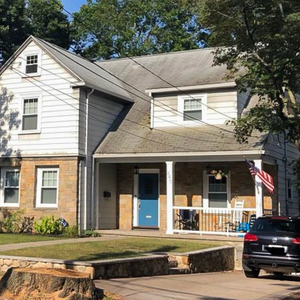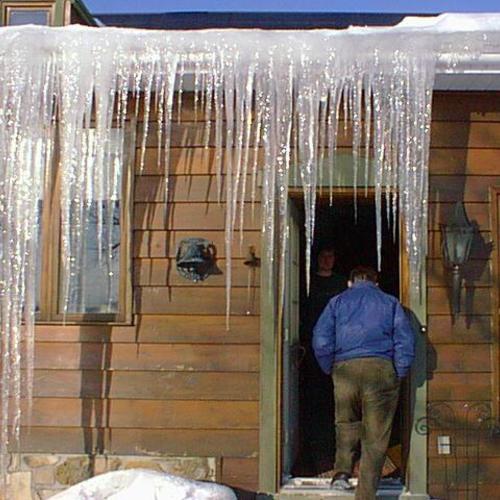
Ice dams are a common problem in many of the existing homes in my area of Grand Rapids, Minnesota, climate zone 7. In my neighborhood alone, the number of homes with this problem reaches into the double digits. I’ve noticed that the intensity of ice dams seems to change from year to year, and that this year seems to be a bad one.
Recently, I was on an ice dam–diagnostics job with an insulating contractor and a general contractor. The house was built in the early 1990s, and there is evidence of ice dams having been an issue from the get-go. We spent a couple of hours testing this home; I’ll share what we found here.
Why ice dams form
It’s simple: In areas that receive snowfall, snow will accumulate on the roof. Some mechanism (I will get into this below) causes the roof sheathing to warm beneath the snow, which makes it melt. As the liquid water runs down the roof, it meets the roof eave, which is cold, thereby causing the liquid water freeze. The ice builds up over time until it eventually forms a “dam.” Often, this accumulation creates icicles that hang on the eave, which can be dangerous.
So, what causes roof sheathing to warm? Dark-colored siding on the south-facing side of a house can create heat that moves up to the roof deck. Mechanical ventilation and combustion exhaust exiting the house out a wall near a roof eave can also create enough heat to melt snow, although, in my experience, these causes are less common; more common is forced-air ductwork located in an unconditioned attic.
By far, the biggest culprits when it comes to ice dams are air leaks at the ceiling or upper wall, attics with inadequate insulation levels—especially near the…
Weekly Newsletter
Get building science and energy efficiency advice, plus special offers, in your inbox.

This article is only available to GBA Prime Members
Sign up for a free trial and get instant access to this article as well as GBA’s complete library of premium articles and construction details.
Start Free TrialAlready a member? Log in















3 Comments
Ice dams can be eliminated by working from the inside but it takes effort. I prefer a vented attic in our MN climate. A cathedral ceiling can be opened from the warm side and a ventilation channel beneath the roof deck can be established from the eave to the ridge. The remaining rafter space is filled with batt insulation. To bring the ceiling insulation to code level, strap polyiso sheets beneath the rafters with seams foil taped. The new ceiling can then be put in place. This method works and would be cost competitive to the alternate method of insulating the existing roof deck. Also the work can be done anytime during the year.
Good advice Doug! I see this done on occasion, and you are right, lots of work, but so is the alternative. I'd also add having a blower door test completed before adding the ceiling finish. Sometimes that wall to ceiling transition is tough to get a good seal unless you can remove enough wall finish to get to the wall air control layer.
The best thing we can do as builders is get the details right when building new. Some of these repairs are very expensive and disruptive to the homeowner when fixes are needed.
For our Minnesnowda house (6A) we created a 2 inch vent between rafters and then sprayed close cell foam to help air seal the attic. Then buried all of the A/C vent in 16 inches of fiberglass. That eliminated the ice dams on the south facing side.
Log in or become a member to post a comment.
Sign up Log in